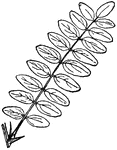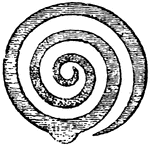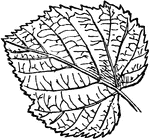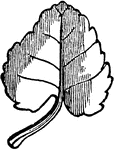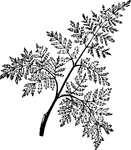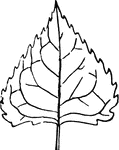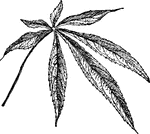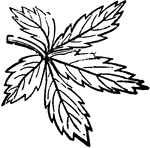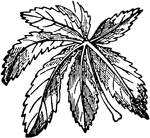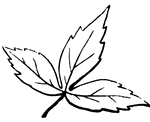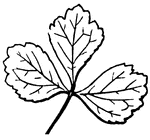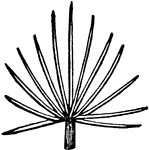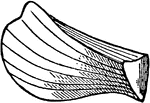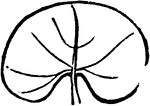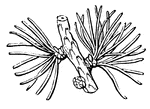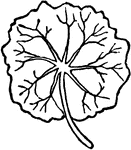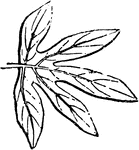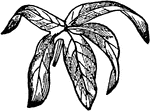The Leaf Shapes ClipArt gallery offers 310 examples of the various shapes, margins, and arrangements of leaves. For leaves of specific shrubs or trees, please see our Flowers and Shrubs selections, or our Trees gallery.
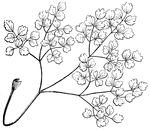
Compound Leaf
This is an example of a decompound leaf structure, meaning it is divided three or four times.
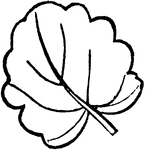
Crenated Leaf
"Crenae.--Notches, or round teeth, bordering a leaf or the petals of a flower." -Newman, 1850

Decurrent Leaf
"Decurrent.--When leaves run down the stem to a point considerably below the place where they diverge…

Fork-Veined Leaf
"Fork-veined leaves are those in which the primary veins divide into two nearly equal secondary veins,…

Imbricated Leaves
"Imbricate.--When leaves are laid one over another, like tiles on a roof, they are said to be imbricated."…
Lanceolate Leaf
"Lanceolate, when it is three or more times as long as it is broad, and rounded at the base, and tapering…

Lanceolate Leaf
Lanceolate leaves are lance or spear shaped. These leaves are narrowly elliptical, tapering to each…

Lyrate Leaf
"Lyrate.--Lyre-shaped: cut into many transverse segments, becoming larger towards the extremity of the…

Oblong Leaf
"When a leaf is bounded by a regular curve, and it three or more times as long as it is broad, it is…
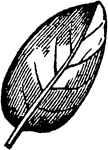
Ovate Leaf
"It is said to be ovate when it has the outline of the longitudinal section of an egg."—Darby,…

Pandurate Leaf
Pandurate leaves are fiddle shaped. The leaves arer obovate in form, with one or two deep recesses or…

Parallel-veined Leaf
This type of parallel-veined leaf has veins running from the base of the leaf to the point.

Parallel-veined Leaf
This type of parallel-veined leaf has veins running from the midrib of the leaf to the margins.
